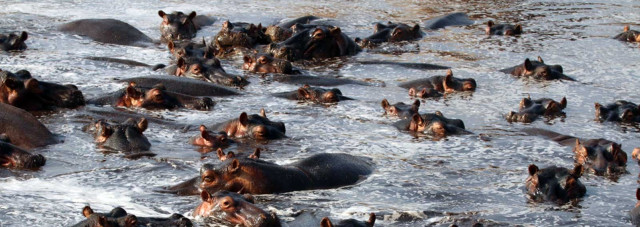The Hippo’s Hidden World

Humans and hippopotamuses have shared the watersheds and savannahs of Africa for hundreds of thousands of years. Yet little is known about hippos’ movement and range and how they contribute to the mighty animals’ impact on the world around them.
Now, a team of scientists from UC Santa Barbara has finally uncovered some of the basic facts about hippos’ spatial ecology.
“The lack of data on hippo movement has been a big blind spot in hippo conservation,” said Douglas McCauley, an associate professor in UC Santa Barbara’s Department of Ecology, Evolution and Marine Biology (EEMB). “And if you don’t know where a hippo goes, how in the world can you design a thoughtful management plan for the species.
This study is particularly significant, according to Keenan Stears, the EEMB postdoctoral researcher who led project, because it marks the first time anyone has successfully electronically tracked a hippopotamus.
The team’s findings are featured in the journal Scientific Reports.